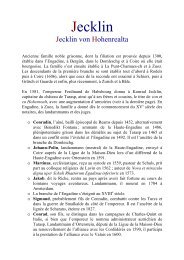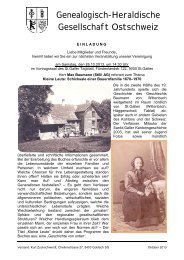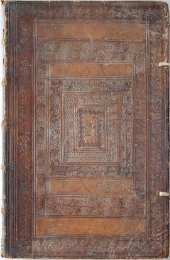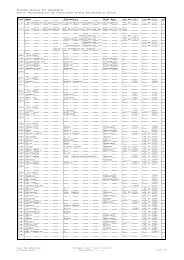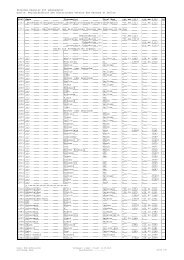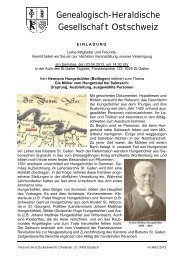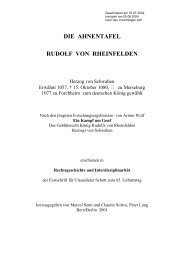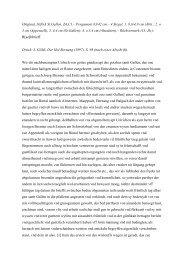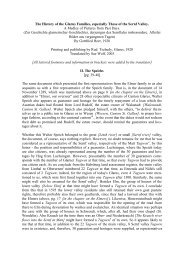The History of the Glarus Families, especially Those of the Sernf ...
The History of the Glarus Families, especially Those of the Sernf ...
The History of the Glarus Families, especially Those of the Sernf ...
You also want an ePaper? Increase the reach of your titles
YUMPU automatically turns print PDFs into web optimized ePapers that Google loves.
tion set in [against <strong>the</strong> "new faith"] in <strong>the</strong> Gaster [<strong>the</strong> Canton St. Gallen district where Amden<br />
is located, which remained Catholic] after <strong>the</strong> second Kappeler war [1531].<br />
However, an Italian document, which has already been <strong>of</strong>fered for purchase for 40 years,<br />
which traces <strong>the</strong> history <strong>of</strong> <strong>the</strong> Heftis back to <strong>the</strong> time <strong>of</strong> Kaiser Friedrich Barbarossa [Holy<br />
Roman Emperor, 1152-1190] and to Hungary, and allocates high military positions to <strong>the</strong>m,<br />
may be considered as a fabrication for speculative purposes.<br />
a Field name: people with identical names were differentiated by adding <strong>the</strong>ir occupation or a descriptive term<br />
for <strong>the</strong> area where <strong>the</strong>y lived [SW]<br />
b Tagwen – an ancient term, from at least <strong>the</strong> 6th century A.D., which is still used today in Canton <strong>Glarus</strong> to<br />
denote <strong>the</strong> commune <strong>of</strong> <strong>the</strong> citizens, i.e. those who have inherited or purchased <strong>the</strong> Tagwen rights (this may only<br />
partially coincide with <strong>the</strong> political commune). It is derived from Tage Wann, meaning <strong>the</strong> work someone could<br />
perform in one day in <strong>the</strong> commonly-held fields, pastures and forests. Over <strong>the</strong> years <strong>the</strong> number <strong>of</strong> Tagwen in<br />
<strong>the</strong> canton has varied considerably, with <strong>the</strong> present-day number being 29. Also its duties have changed – from<br />
jointly working on and enjoying <strong>the</strong> benefits <strong>of</strong> its common property, to administering all <strong>the</strong> commune’s public<br />
interests, to (today) administering and enjoying <strong>the</strong> benefits <strong>of</strong> its common property. [SW]<br />
1 In 1634 a second daughter, Elsbeth, followed, and, in 1637, a head <strong>of</strong> family, Samuel.<br />
2 From Hätzingen <strong>the</strong> Hefti family also went to Norway in <strong>the</strong> 18 th century, by means <strong>of</strong> Johannes Hefti (born in<br />
1730, died in 1801), who, at first from Hätzingen, carried on a timber trade to <strong>the</strong> Ne<strong>the</strong>rlands, but <strong>the</strong>n emigrated<br />
to Norway. <strong>The</strong>re he established a timber business with his sons, Thomas, Fridolin and Heinrich, and later<br />
he added on a bank to it. Descendants <strong>of</strong> this Hefti still live today in Christiania. <strong>The</strong>y have long since become<br />
Norwegians; none<strong>the</strong>less, <strong>the</strong>y have not completely forgotten <strong>the</strong>ir Hätzingen origins (one <strong>of</strong> <strong>the</strong>m requested a<br />
Hefti family tree from me about 30 years ago, which request I, however, could not satis fy at <strong>the</strong> time because <strong>of</strong><br />
o<strong>the</strong>r work).



